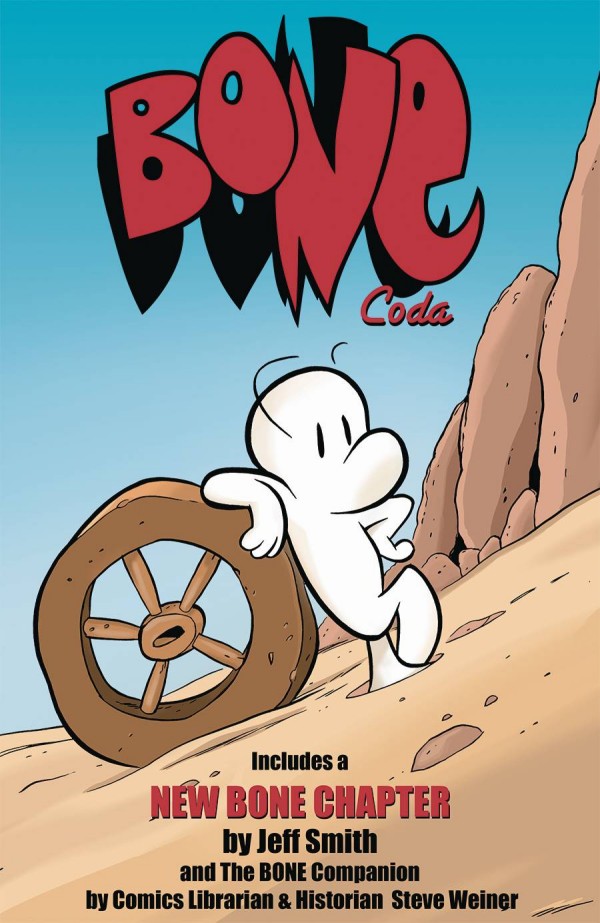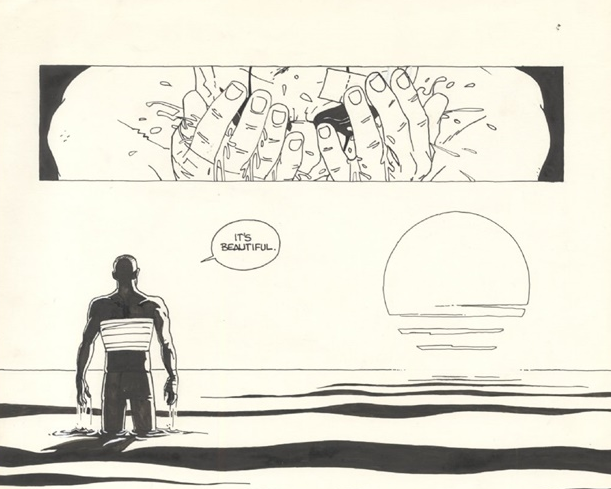Welcome to 2017. Hopefully next week I'll emerge from my link blogging holiday coma and be back in normal mode. Until then, I still have to put some kind of list together of my favorite comics of 2016. But until then, here's a quick look at some of the stuff that's happened here at Panel Patter over the past year.
Top 10 Posts of 2016
Here's the list of the most popular posts of the year. And of course, nothing was more popular this year than Bernie Sanders as Snow White.#1: Graphic Nonfiction: Birdie Sanders and a Brief History of the Finch (Rob M.)
Lastly, Panel Patter doesn't endorse presidential candidates (though we might have gone for Captain America, way back when) but we will use any excuse possible to show this:
Princess Sanders by Kipp Creations
#2: SPX Spotlight 2016: Dan Clowes' Patience (Scott C.)
Don’t get too comfortable reading Daniel Clowes’ Patience. Don’t allow yourself to get 5 or 10 page into the book thinking you know what this story is. The book is a story about a young couple, expecting their first child and trying to figure out how they’re going to make ends meet. To keep his wife Patience calm and assured that everything is going to be o.k., Jack lies to her about his job, saying he’s on the fast track to a promotion while he’s really standing on a street corner, handing out flyers for some business or another. These first few pages almost seem like something more out of a recent Adrian Tomine book than a Clowes book. Then again, Clowes is the guy who did Ghost World, a book that has served as a template for so many of Tomine’s works.
#3 All-Ages or Small-Ages #9 (Grumpy Cat - Volume 1) (Mark D.)
#4: Paper Girls (1-3) (James K.)
#5: Lives Worth Examining in Charles Burns' Last Look (Scott C.)
6: SPX Spotlight 2016: The Love and Rockets New Stories Years (2008-2015) (Scott C.)
#7 Weekend Pattering for October 14th, 2016-- Sean Phillips Revisited (Scott C.)
#8 Requiem-- a review of Hellboy in Hell #10 (Scott C.)
And while you're poking around, here are 5 reviews that you may want to just check out again.
However, it’s unfortunately not a characterisation that works with an older audience. Grumpy is so unrepentantly moody (it is in her name) that it feels draining to read in big chunks. Her enthusiastic brother Pokey comes up to her with these exciting ideas and thoughts and it becomes a bit disheartening to see him so consistently rebuffed. That might be me putting too much of myself into his place, but it’s difficult for me to ignore. As a comparison, it feels to me like watching Disney’s Peter Pan: as a child he’s this epitomisation of youth and bravery, but watching as an adult, you realise that he’s just an asshole.
#4: Paper Girls (1-3) (James K.)
Much like Vaughan and Staples on Saga, this book feels from start to finish like there's real synchronization between all aspects of storytelling. I really can't say enough about the precise, deliberate, thoughtful visual storytelling and scene setting from Chiang and Wilson. As you can gather from my introduction, this era is important to me, memory-wise and emotionally. I was thrilled with all the small touches and ways that they got this era right. From the Far Side calendar on Erin's desk (a staple of late 80's life), to the posters to the fashion choices for each of the girls, this feels like 1988. That's one of my gripes about comics or other media set in the 1980s, is that most people choose to go with incredibly facile, obvious choices, or they think that everything is the same throughout the entire 80's. 1988 was not 1984 or 1985.
#5: Lives Worth Examining in Charles Burns' Last Look (Scott C.)
Like in his classic Black Hole, Burns uses his fantasies to explore the emptiness in us. Transitioning into and out of the stories of Doug and Johnny 23, Burns switches up art styles a bit. Johnny 23’s story is told in a faux Hergé style, using the Belgian cartoonist’s clean line style to set the world apart and to also make it feel a bit more simple and safer than it really is. Burns’ use of this style suggests a more innocent world and character in Johnny 23 even if his world is full of all kind of oddities and horrors. Doug’s story is, arguably, the “real” world but it’s a much harsher image of existence even though it’s an everyday vision of our lives. But in all of the pages, the imagery has this ability to portray the drama of the moments.
After 30 years, it would be easy to pick up a new issue of Love and Rockets and have it feel like visiting an old friend. It could just be the continuing adventures of Palomar or the unending love of Maggie and Hopey. It would be comfortable and warm but the Hernandez brothers refuse to make it that easy for us. Instead of getting caught up in the past and repeating the saga over and over on an infinite loop, Jaime and Gilbert have allowed their stories and characters to have their own lives and to keep moving forward. Their characters have lived and changed, loved and lost and continued to live, reshaping life from one year to the next like all of us do.
#7 Weekend Pattering for October 14th, 2016-- Sean Phillips Revisited (Scott C.)
I'm in love with this page and Phillips' artwork from this series. I see a lot of Al Williamson and Alex Raymond (and even Dave Sim doing his best Alex Raymond impersonation) on this page. It's beautiful. Few comic artists have ever been able to make me believe in their snowy drawings the way that Phillips is doing it here. Part of me wants to see a black&white edition of any of the Brubaker/Phillips joints but then you'd end up missing the coloring of Elizabeth Breitweiser, Val Staples or Dave Stewart. I think if you see anything here it's how great of an image and foundation Phillips lays down for the final printed page.
What’s stunning in Hellboy in Hell #10 is just how silent Mignola’s story is. As he spins his tale about giant demons fighting for the fate of Hell, Mignola, and colorist Dave Stewart pull back from the banter and repartee (even though both are present in unique sidebars) and tell Hellboy’s final story through the power of the images. Paring his drawings down to abstract Kirby krackle, shadows, and his minimalistic-yet-evocative designs, words aren’t needed to get to the heart of Mignola's story. As Hellboy confronts big concepts like destiny and fate, it’s important that Mignola doesn’t explain a lot. After 20+ years of story, Mignola shows us the final story without a clear explanation of the meaning of the final actions of the character. He leaves a lot of the meaning and symbolism of his story up to the reader's own interpretation.
The art style invokes a style of television program that you’ve probably seen advertised that airs on Disney Junior. Although there is a period of adjustment, honestly only because you expect a certain shallow style of storytelling, it has an undeniable energy to it that makes each page feel like a dynamic entity in and of itself. While there are definitely exceptions, there’s a inter-panel connectivity that allows you to fly through the story, creating the illusion of flickering pictures in front of you; at the end of the day, isn’t that what all comic art aspires to do?
#10 Rob Kirby's Review Roundup: August 2016 Edition (Rob K.)
The mini-genre of comics about teaching has been growing in recent years; artists such as Cara Bean, Robyn Jordan, and Aron Nels Steinke have all mined this rich field for personal storytelling, humor, and advocacy. Chicago-based artist Alex Nall began drawing his own comics in this vein in 2013. Presented in diary format and rendered in his Brunetti-influenced drawing style, Nall describes the occasional triumphs and many travails of teaching art to inner city children, which naturally provides Nall with insights into own artistic drives, ambitions, and insecurities. He also gives us an acute sense of the day-to-day problems of being an instructor, as when he tries to help an uncomprehending student solve a very basic arithmetic equation, or his continuous frustrated efforts at controlling his more unruly charges.
5 Reviews to Revisit
And while you're poking around, here are 5 reviews that you may want to just check out again.- Ultraman Volumes 1 & 2 by Tomohiro Shimoguchi and Eiichi Shimizu (Douglas P.)
- Observational Autobiography in John Porcellino'sKing-Cat Comix and Stories #76 (Scott C.)
- SPX Spotlight: David Rubin (James K.)
- 4 Kids Walk Into a Bank #1 [Advance Review] (James K.)
- Graphic Nonfiction: Mari Naomi Plants a Story from Her Life (Rob M.)


















